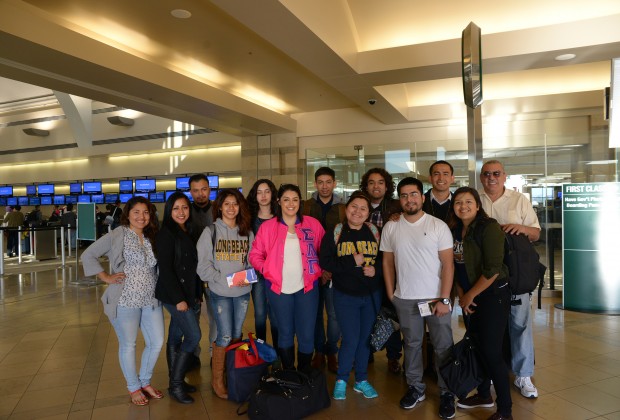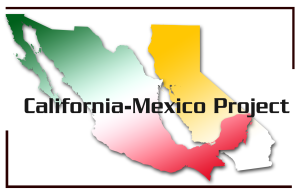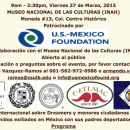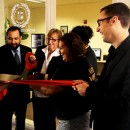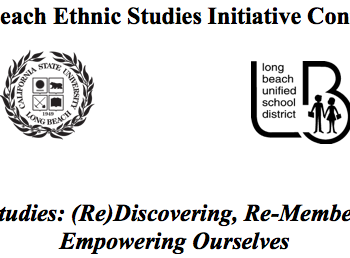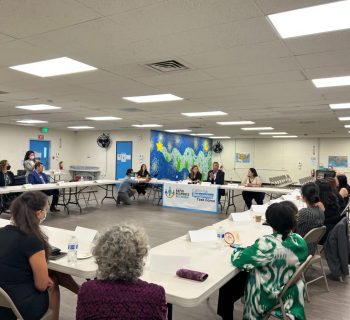By Richard Manly, Inside CSULB ~ March 16, 2015
http://web.csulb.edu/misc/inside/?p=50483#.VQdFokjtvAo.email
For the first time, a model California State University class will allow AB540 students with a study-abroad opportunity under the protection of President Obama’s Deferred Action for Childhood Arrivals (DACA), a significant milestone previously unavailable to over 600,000 students commonly referred to as “Dreamers.”
This historic CSULB “alternative Spring Break” class will offer 14 Dreamers a journey to Mexico City and Cuernavaca from March 25 to April 5 with Chicano and Latino Studies’ Armando Vazquez-Ramos as part of the department’s California-Mexico Project funded by the College of Liberal Arts and a $10,000 grant from the Instruction Related Activity Fund.
In addition, the California-Mexico Studies Center directed by Vazquez-Ramos is providing $34,000 in matching funding from the L.A. Mexican Consulate and the U.S.-Mexico Foundation to cover most of the students’ expenses, a policy seminar in Mexico City during the trip and a documentary on the project.
Of the 15 participating students, 14 are Dreamers, enrolled in the Chicano and Latino Studies course “California-Mexico Policy and Higher Education Experience” which requires the students to produce a research paper on a policy issue and to reflect upon their experience during the trip.
DACA is a memorandum authored by the Obama administration in 2012 that directs U.S. Customs and Border Protection, U.S. Citizenship and Immigration Services and U.S. Immigration and Customs Enforcement to practice prosecutorial discretion towards some individuals who immigrated to the U.S. as children and currently are in the country without documents.
“This is a landmark precedent that I am certain will open the doors to other DACA students granted an Advance Parole authorization under the provisions of DACA for educational or humanitarian purposes,” said Vazquez-Ramos. “It creates unprecedented opportunities for Dreamer students like those in my class. For them to return to Mexico for an educational purpose gives them the chance to preserve relations with family, receive over 60 hours of Spanish language and Mexican culture instruction and to visit historical and archeological sites.”
DACA-protected Dreamers can also secure an Advance Parole permit for humanitarian reasons, which guarantees their legal re-entry into the U.S. if they face serious illness or the imminent passing of a loved one.
“Imagine the frustration at not being able to bid farewell to a dying relative. When you are in the U.S. without documents, going back to Mexico is impossible because you know you may have to go through hell to come back in,” said Vazquez-Ramos.
After more than 15 years, the California-Mexico Project is offering this travel-study opportunity for CSULB students through funding from the U.S.-Mexico Foundation and the L.A. Mexican Consulate’s Becas IME program.
“Many of these students have not returned to Mexico for 20-plus years,” explained Vazquez-Ramos who joined the university in 1968 as one of the first EOP students at CSULB and as a student leader was a co-founder of the Chicano and Latino Studies department in 1969. “One of the fundamental purposes of the trip is to study Spanish and Mexican culture. Since there is a mix of Spanish proficiency in the group, the students are placed into classes of five per instructor based on their level of fluency to improve vocabulary, grammar and cultural expression. They will take classes for a full week, five hours per day, as well as lectures by faculty at the CETLALIC Institute in Cuernavaca”. CETLALIC is one of the most progressive Spanish language schools in Mexico and offers small Spanish classes and homestays with Mexican families in a community-minded environment.
Vazquez-Ramos explained that the home-stay experience reinforces the language and culture instruction with full immersion.
“From the moment they arrive on March 25, through five days of study at the CETLALIC Institute, students not only learn in the classroom but from the family members they stay with and they develop emotional attachments in just one week,” he said. “Last year, there were tears even from the young men as we departed Cuernavaca to return.”
One of the highlights of the journey will be a daylong seminar at the National Museum of Cultures on the issue of the Dreamers and the massive amount of U.S. citizen children that have been forced into exile in Mexico.
“We will host and organize a policy seminar which will review the situation of young people who were born and raised in the U.S. but left when their parents were deported back to Mexico,” he explained.
According former State Senator Lou Correa, U.S. Ambassador Anthony Wayne expressed in December 2013, that there are more than 500,000 U.S. citizen children in Mexico today and that figure may be as high as 700,000. Vazquez-Ramos is a leading voice on the plight of these undocumented U.S. citizens in Mexico and states that “we plan to broadcast the seminar through a webcast which will offer the chance to reach a global audience” on this most critical issue.
Following the seminar, the students will have a “Re-encuentro Familiar Day,” a family encounter with more than 50 family relatives who will travel from throughout Mexico to spend the day with them on Saturday, March 28.
In addition, Vazquez-Ramos noted, “we also plan to again visit the Mexican federal senate where our class was hosted for breakfast by three senators and introduced last year during the opening of the session, and our Mexico City activities will include visits to the Basilica of the Virgin of Guadalupe, the National Anthropology and Frida Kahlo museums, Teotihuacan- the most ancient archeological site in the Western Hemisphere, La Plaza of the Three Cultures and the 1968 Memorial, which is the site of the student movement’s repression on Oct. 2, 1968.”
At the end of 12 days of field trips and classes, both in Mexico City and Cuernavaca, the students will visit the silver mining city of Taxco before saying goodbye to their host families. “This is a rare opportunity for all the students concerned and we hope to come back with many new experiences,” he said.
Two film students that are part of the class are working with Vazquez-Ramos to film and produce a documentary based on the entire project, which will chronicle the trip, cultural challenges faced by the Dreamers and how similar classes can be realized by other colleges and universities. “I want to show how classes like these are possible anywhere,” he said. “I want to put CSULB on the map as the ‘mecca for Dreamers’ to study abroad.”
Vazquez-Ramos argues that one of the fundamental objectives of his class is to create a model for other universities. “The message of this class is ‘Si se puede’ or `yes, it can be done,’” he explained. “This is how Dreamers will have the opportunity to exercise the benefits of their DACA status and I am working with the U.S.-Mexico Foundation to raise the funds to take 100 Dreamers for a full month to Mexico this summer.”

